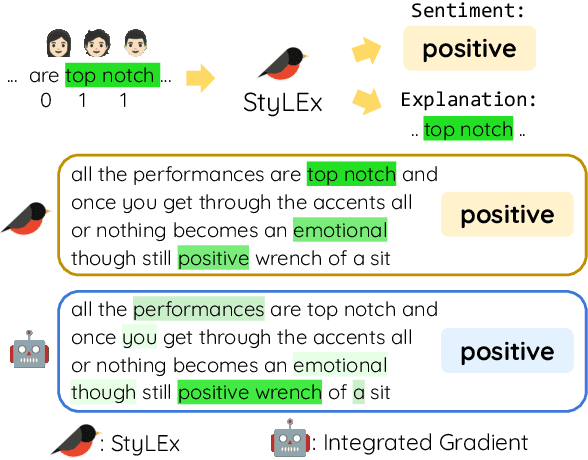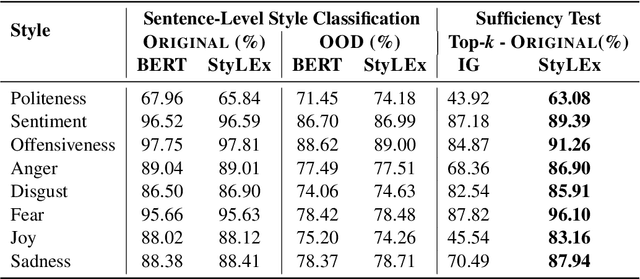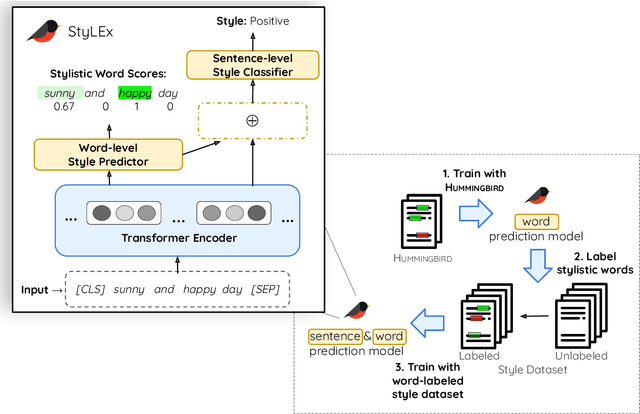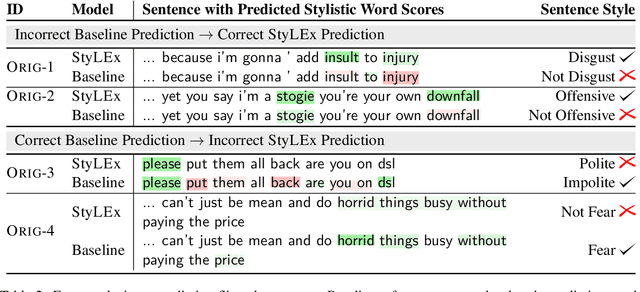StyLEx: Explaining Styles with Lexicon-Based Human Perception
Paper and Code
Oct 14, 2022



Style plays a significant role in how humans express themselves and communicate with others. Large pre-trained language models produce impressive results on various style classification tasks. However, they often learn spurious domain-specific words to make predictions. This incorrect word importance learned by the model often leads to ambiguous token-level explanations which do not align with human perception of linguistic styles. To tackle this challenge, we introduce StyLEx, a model that learns annotated human perceptions of stylistic lexica and uses these stylistic words as additional information for predicting the style of a sentence. Our experiments show that StyLEx can provide human-like stylistic lexical explanations without sacrificing the performance of sentence-level style prediction on both original and out-of-domain datasets. Explanations from StyLEx show higher sufficiency, and plausibility when compared to human annotations, and are also more understandable by human judges compared to the existing widely-used saliency baseline.
 Add to Chrome
Add to Chrome Add to Firefox
Add to Firefox Add to Edge
Add to Edge